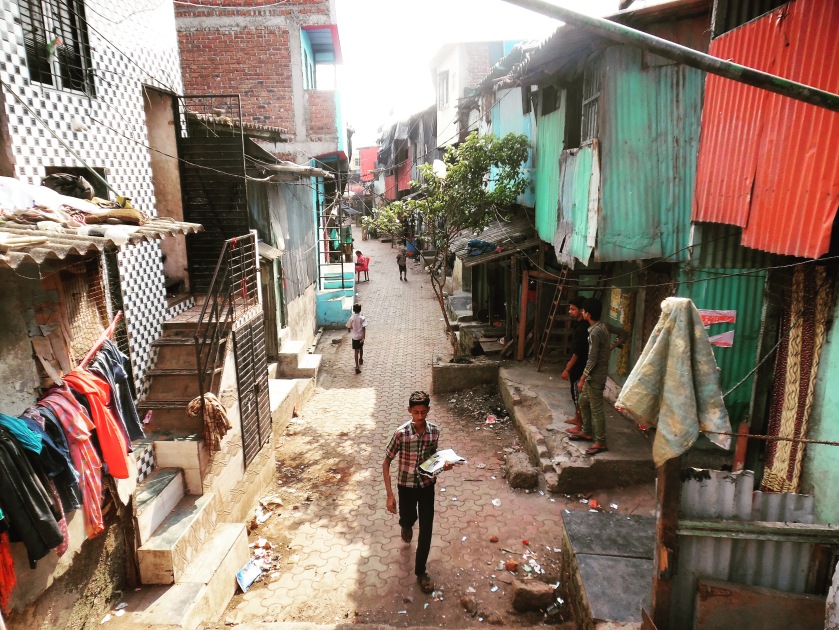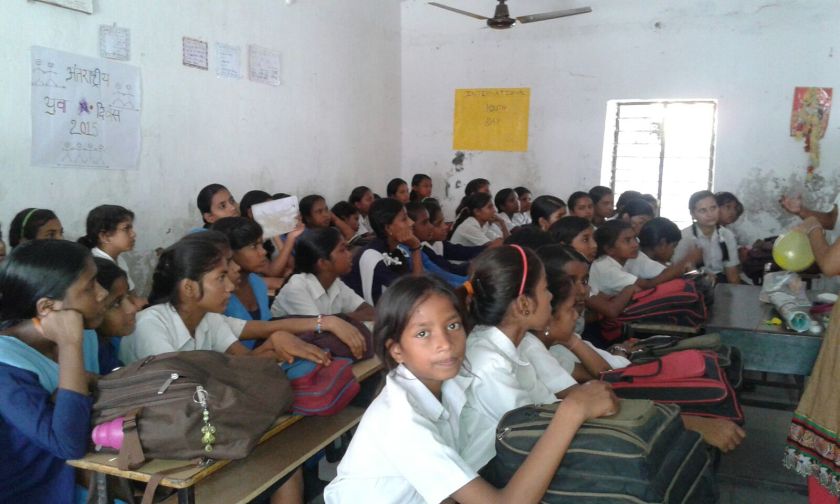By Alexandra Birladianu, Senior Manager Communications Aangan Trust / LGT Venture Philanthropy ICats Fellow
On the 4th of November I went for the second time to the Govandi slum in Mumbai. Govandi is situated next to one of the biggest and oldest garbage dumping grounds in Mumbai. Daily, heavy trucks bring garbage, contributing to the traffic and pollution in the area.

Because of its status as an illegal slum, the population has no access to key services. There is a heavy presence of local gangs and mafia. Violence is normalized.
The slum comprises a migrant population of approximately 3,000 households consisting of 18,000 people. The key livelihood option is working at the dumping ground, with families having children as young as 7 and 8 years old starting to work there; “zari” work and catering are other industries present in the area.
I think subconsciously I have avoided Govandi. The first time I went there I felt really sick for a few days after. After this visit I got rashes on my arms and fever. I think that the fumes from the huge garbage dump in the vicinity of the community combined with the Mumbai heat made me sick. And people live here. 18,000 men, women and children live in Govandi every day, a lot of them working at the dumping ground.
But my visit was a happy one. I was excited to be there, meeting 10 adolescent girls for a photography workshop. I had my iPhone and two digital cameras with me; and tips and tricks on how to take compelling photographs. Our mission was very important! Map the unsafe areas in the community, take photos and prepare for an exhibition where the local police was invited. The girls would show them the unsafe areas in the community and set a common plan of action. Because they want to go outside and play! Because they want to walk safely to school! Because they want to use the one toilet in the community without fear of sexual assault and harassment!
We talked for an hour about what makes a good photo, about using natural light, framing, breaking patterns, natural lines, focus and all the other things I could think to share from my experience as an amateur photographer. The most important advice though was to stay safe and try to have fun.

People in Govandi don’t like to be photographed and it is “forbidden” to take any photos close to the garbage dump. The girls had to be very careful. It was glaringly obvious that I was a foreigner so our mission wasn’t easy. I sneaked a few photos with my phone while my Shakti girls walked boldly to places that scare them at night, in the evenings and every time they have to walk by them. Together they took around 400 photographs. We walked from more than an hour around the community.
I witnessed child labour, pollution, sexual harassment, thinking all the time that child protection is a David versus Goliath battle. There was nothing I could do immediately to stop the child I saw doing “zari” work but I knew Aangan through its Shakti, Chauraha and PACT programs is fighting a big battle every day to make a difference, stop child labour, child marriage, trafficking, harm and abuse. It is a long hard fight!

When I got home and started going through all the photographs I got even more excited. My girls paid a lot of attention during the workshop and they are extremely talented. It was hard to just choose 20 photos. But we did it, together with Deepika, our Strategy and Advocacy Coordinator, Nishaat, our Program Associate and Divya, our National Coordinator. After minor editing the photos were ready for print.
The exhibition took place the following Sunday. Still sick, I could not attend. My colleagues told me about its impact. The girls talked with the police officers, parents and other members of their community, showcased their work and explained why those specific areas are unsafe. They talked about how their life is affected, how it makes it difficult for them to attend school, play, walk around, go to the store or use the toilet. And everyone listened. In a community deeply affected by sexism, everyone listened to the 10 adolescent girls who took action.
Now they have a connection with the police, they are not afraid to approach them with their issues or complaints. Hopefully they will feel safer in Govandi, go to school and live a normal life.
Working on the ground with Aangan has been the highlight of my fellowship. Women and girls empowerment in India has many faces and Aangan is doing a wonderful work fighting this battle.

This post was originally published on November 19th on the LGT Venture Philanthropy ICats Blog.
About Aangan:
Aangan is a child protection organization that promotes safe communities for children with a focus on children in dangerous or difficult situations and environments. These are children imperiled by their exposure or vulnerability to isolation, neglect, violence, hazardous or exploitative work, early marriage, juvenile offending, trafficking and abuse. We enable safe communities where children, adults and governments work together to prevent and respond to the harm that these children face.
Follow Aangan on Twitter and Facebook for daily updates, regular people child protection stories, and more.
About Alexandra:
I am an ICats Fellow with the Aangan Trust in Mumbai, India. As part of LGT Venture Philanthropy‘s support to scale proven local solutions, the ICats Program was established to provide additional know-how to social organizations. The program connects social organizations in need of professional know-how, and experts with the desire to apply their knowledge in a meaningful way, thus acting as “Impact Catalysts”.




